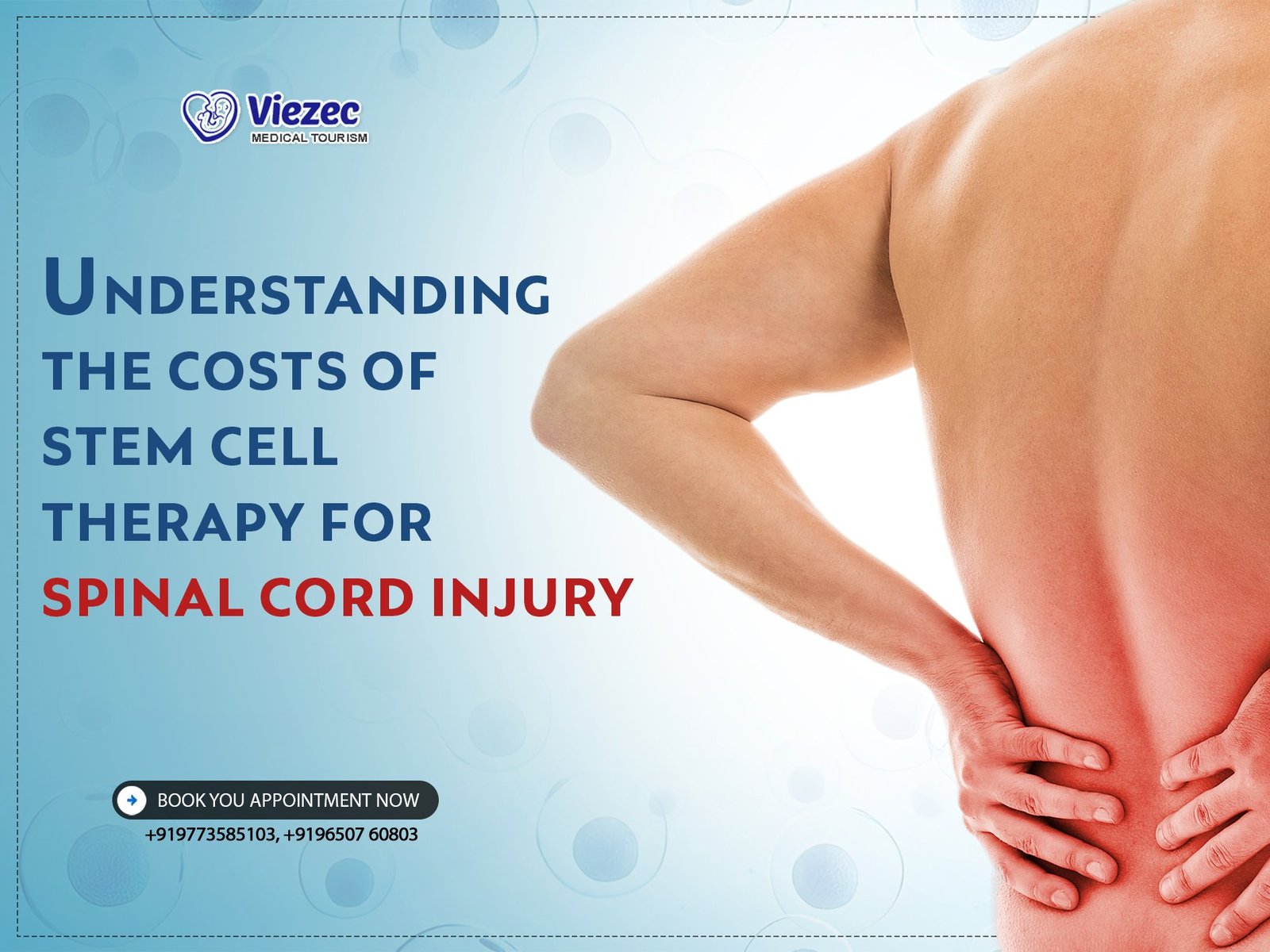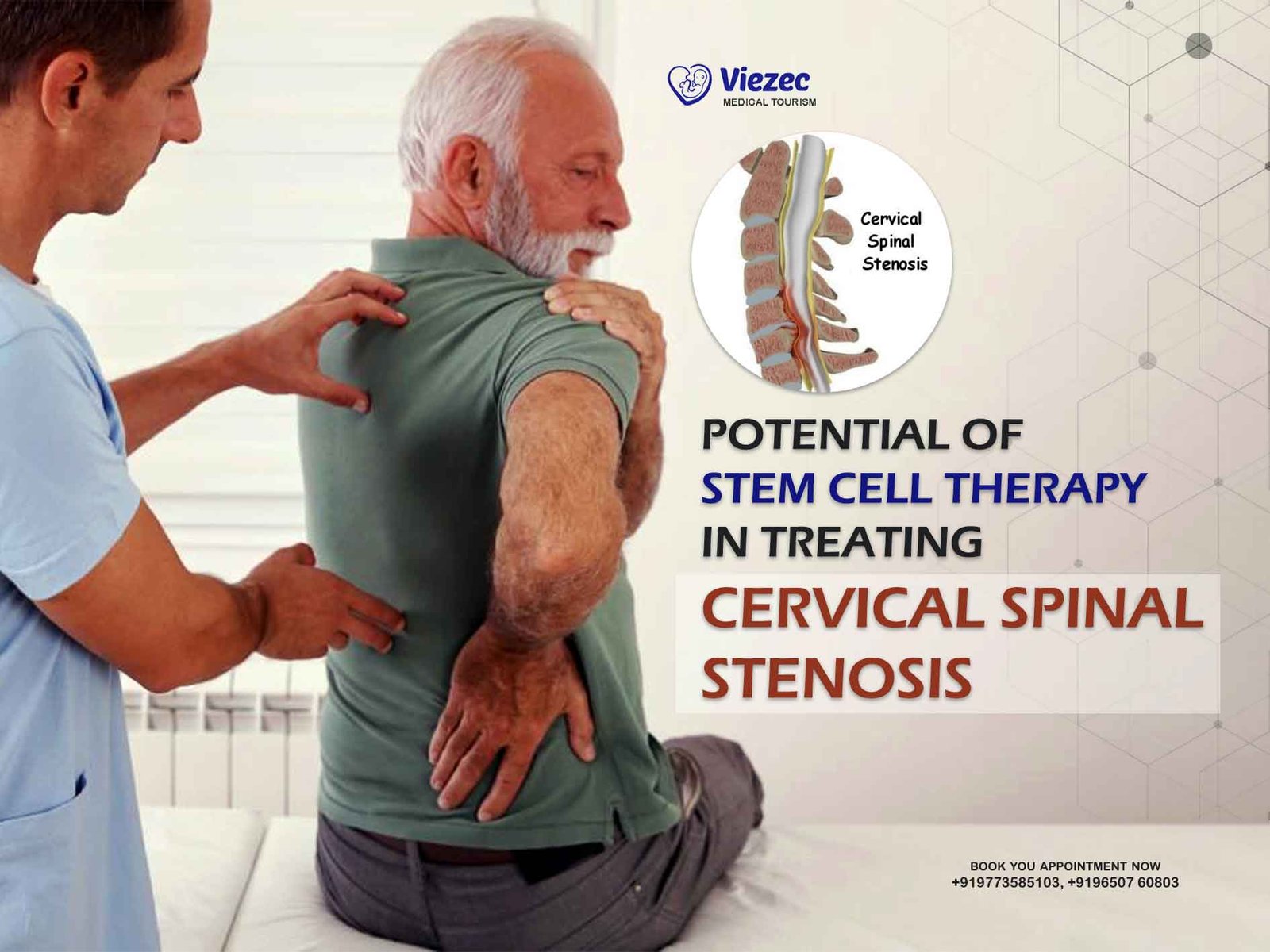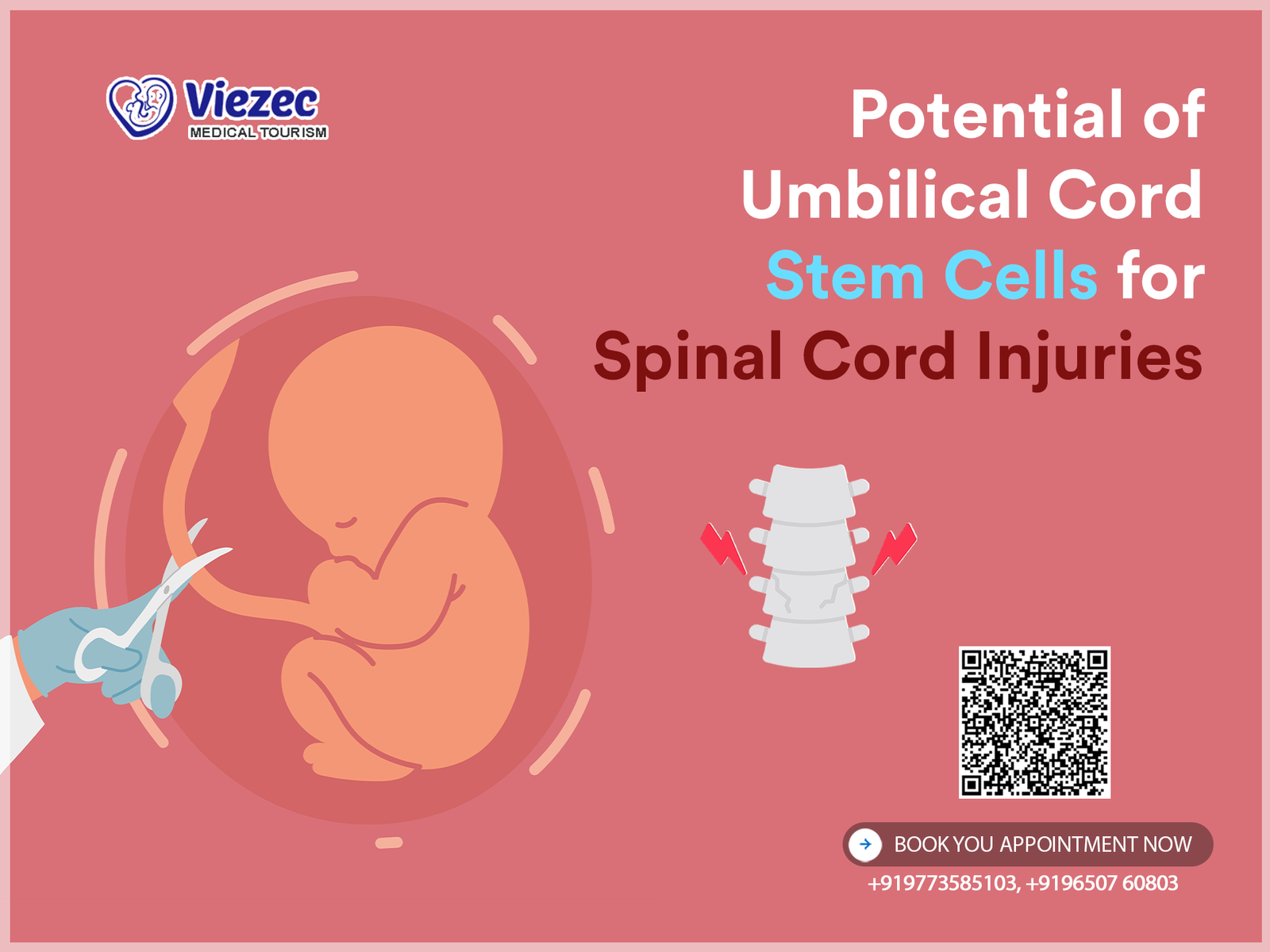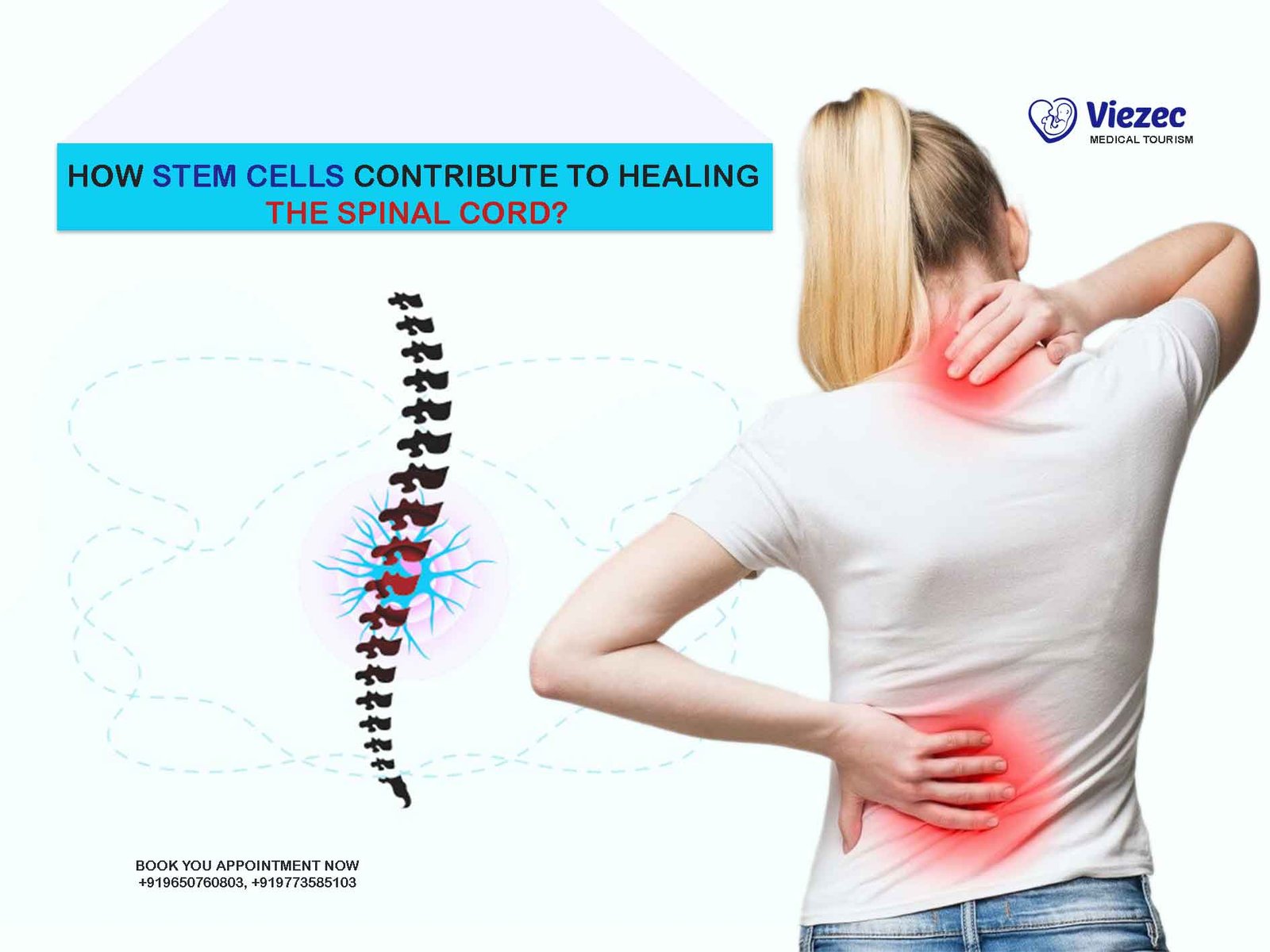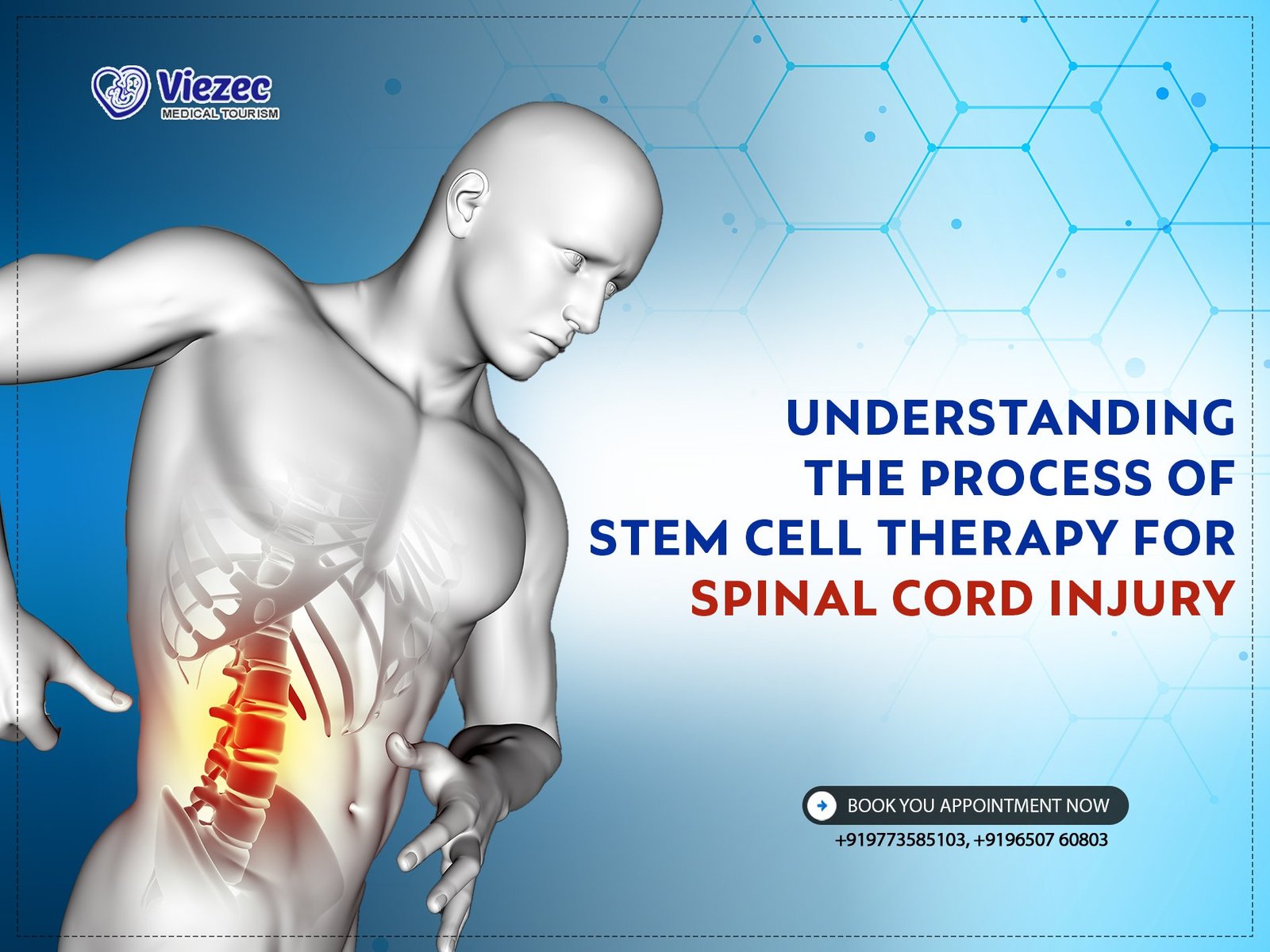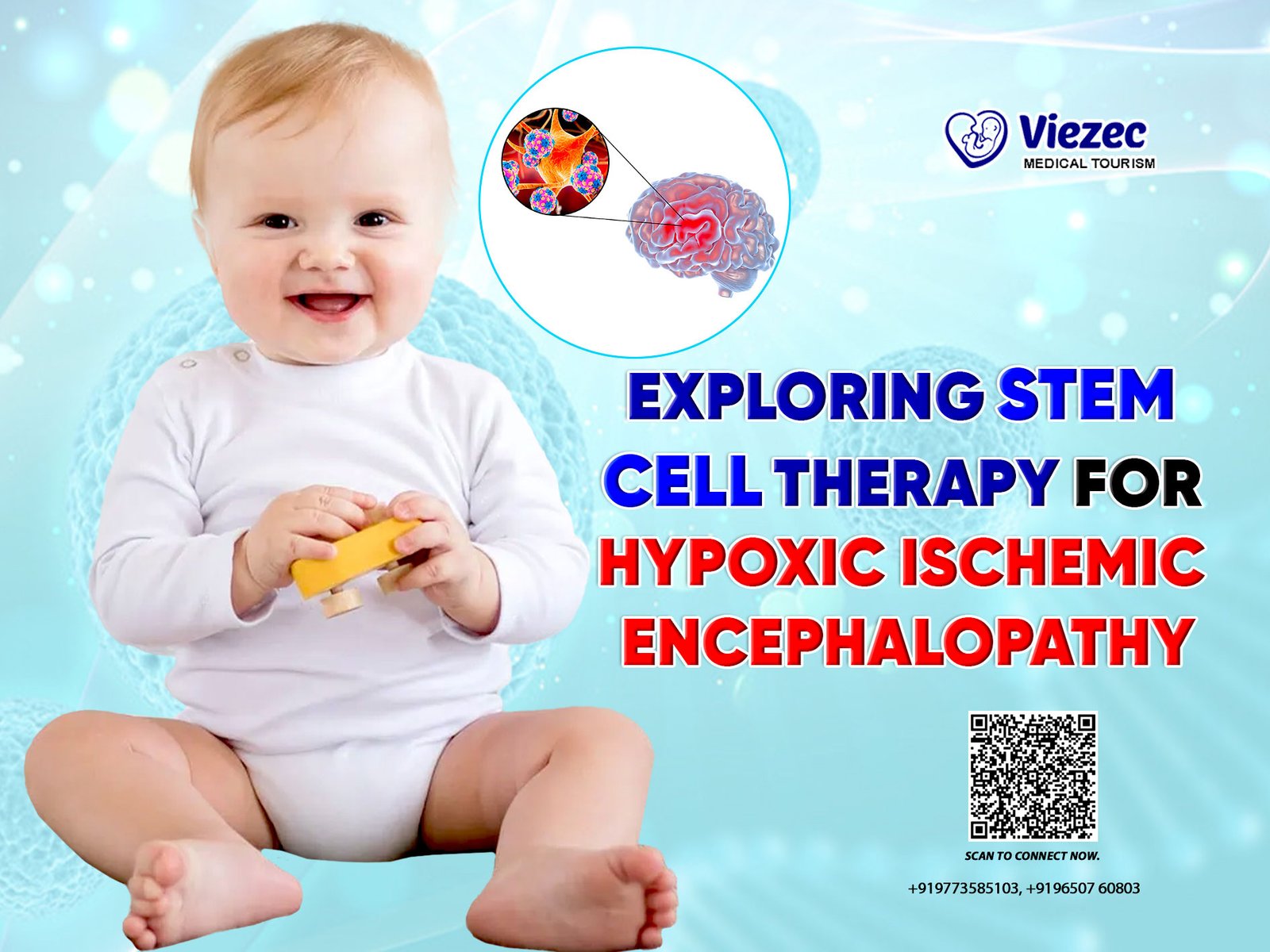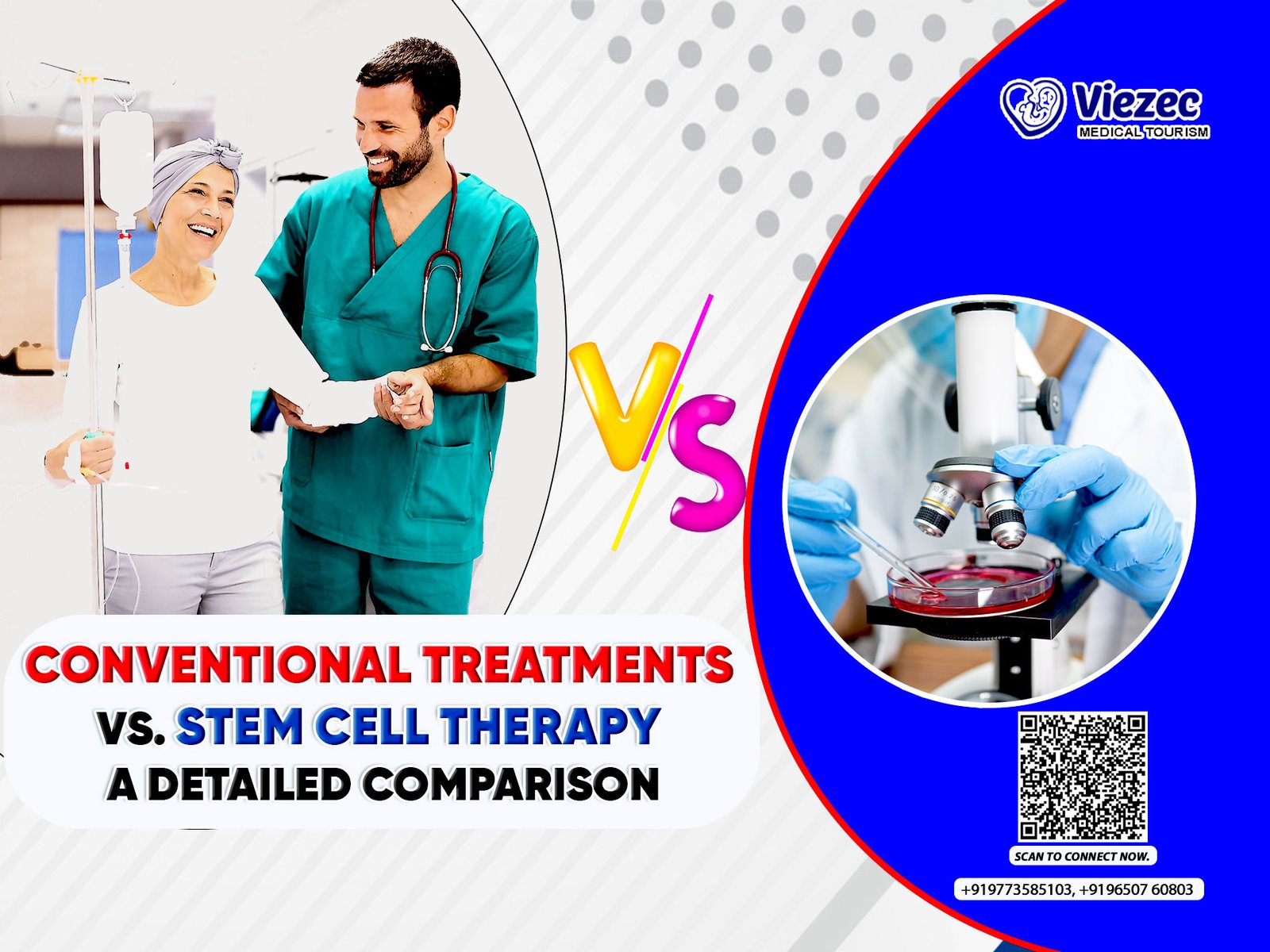Spinal Cord Injury (SCI) is a debilitating condition resulting from damage to the spinal cord, often leading to permanent loss of function, sensation, and mobility below the site of injury. Causes include traumatic incidents such as accidents, falls, and sports injuries, as well as non-traumatic factors like diseases and congenital defects. The impact on individuals and their families is profound, with long-term care, rehabilitation, and lifestyle adjustments required. This overview highlights the critical need for effective treatments and innovations in SCI care, particularly focusing on the potential of stem cell therapy.
Importance of Stem Cell Therapy in SCI Treatment
Stem cell therapy represents a groundbreaking approach in the treatment of SCI, offering hope for regeneration and repair of damaged spinal tissues. Unlike traditional methods that primarily aim to prevent further injury and manage symptoms, stem cell therapy seeks to restore function by replacing lost or damaged cells, promoting regeneration, and reducing inflammation. This innovative treatment has shown promise in preclinical and clinical studies, demonstrating potential improvements in motor function and quality of life for SCI patients. As research advances, understanding the cost implications of such therapies becomes crucial for patients, healthcare providers, and policymakers.
Purpose and Scope of the Discussion
The purpose of this discussion is to comprehensively explore the costs associated with stem cell therapy for SCI, considering various factors influencing these expenses. This article will delve into the types of stem cells used, the mechanisms and advances in therapy, and the detailed breakdown of cost components from initial consultation to post-treatment care. Additionally, it will compare these costs with other treatment modalities, analyze the economic impact, and address ethical and regulatory considerations. By providing a thorough understanding, this discussion aims to inform patients, caregivers, and stakeholders about the financial aspects of pursuing stem cell therapy for SCI.
Understanding Stem Cell Therapy
Types of Stem Cells Used in Therapy
Embryonic Stem Cells
Embryonic stem cells (ESCs) are derived from early-stage embryos and have the unique ability to differentiate into any cell type in the body. Their pluripotent nature makes them highly valuable for regenerative medicine, including SCI treatment. However, the use of ESCs raises ethical concerns and regulatory challenges due to the source of these cells. Despite these issues, ESCs have shown potential in preclinical studies for repairing spinal cord damage, although their clinical application remains limited due to ethical, immunological, and technical hurdles.
Adult Stem Cells
Adult stem cells, also known as somatic or tissue-specific stem cells, are found in various tissues throughout the body and can differentiate into a limited range of cell types related to their tissue of origin. Mesenchymal stem cells (MSCs) from bone marrow or adipose tissue are commonly used in SCI treatment. They are less controversial than ESCs and have shown promise in reducing inflammation and promoting regeneration in the spinal cord. Their ability to be harvested from the patient’s own body reduces the risk of immune rejection, making them a popular choice for clinical applications.
Induced Pluripotent Stem Cells
Induced pluripotent stem cells (iPSCs) are adult cells reprogrammed to a pluripotent state, similar to ESCs, by introducing specific genes. This breakthrough technology allows for the generation of patient-specific stem cells without the ethical concerns associated with ESCs. iPSCs offer great potential for SCI therapy due to their ability to generate a wide range of cell types and their compatibility with the patient’s immune system. However, challenges such as genetic stability and the risk of tumor formation need to be addressed before widespread clinical use.
Mechanism of Stem Cell Therapy in SCI
Stem cell therapy for SCI involves multiple mechanisms aimed at repairing and regenerating the damaged spinal cord. Stem cells can differentiate into neurons, glial cells, and other supportive cells, replacing those lost due to injury. They also secrete growth factors and cytokines that promote tissue repair, reduce inflammation, and inhibit scar formation. Additionally, stem cells can create a supportive environment for endogenous repair mechanisms, enhancing the body’s natural ability to heal. This multifaceted approach holds promise for improving functional outcomes and quality of life for SCI patients.
Current Advances in Stem Cell Research
Recent advances in stem cell research have significantly impacted the field of SCI treatment. Techniques for improving stem cell survival, integration, and function in the spinal cord are continually evolving. Innovations such as 3D bioprinting and biomaterial scaffolds enhance the delivery and support of stem cells at the injury site. Gene editing technologies, like CRISPR, allow for the modification of stem cells to enhance their therapeutic potential. Clinical trials are ongoing to test the safety and efficacy of these advanced approaches, bringing us closer to effective stem cell-based treatments for SCI.
Cost Components of Stem Cell Therapy
Initial Consultation and Diagnosis
The journey towards stem cell therapy for SCI begins with an initial consultation and comprehensive diagnosis. This stage involves detailed medical history review, physical examinations, and assessments by specialists to determine the suitability of the patient for stem cell therapy. Diagnostic tests, such as MRI and CT scans, are conducted to evaluate the extent of spinal cord damage. The costs associated with this phase can vary widely depending on the healthcare facility, location, and the complexity of the assessments required. Accurate diagnosis is crucial for developing a tailored treatment plan, making this an essential component of the overall cost.
Pre-Treatment Procedures
Imaging and Diagnostic Tests
Before initiating stem cell therapy, patients undergo extensive imaging and diagnostic tests to precisely locate the injury and assess the condition of the spinal cord. These tests may include advanced MRI, CT scans, and electromyography (EMG) to evaluate nerve function. The cost of these procedures can be significant, depending on the sophistication of the equipment and the healthcare facility. Accurate imaging is vital for planning the treatment approach and ensuring the precise delivery of stem cells to the affected area.
Laboratory Analysis
Laboratory analysis is another critical pre-treatment procedure, involving blood tests, genetic screening, and other assessments to evaluate the patient’s overall health and suitability for stem cell therapy. This phase may also include the testing of stem cell samples for viability and safety before transplantation. The costs associated with laboratory analysis can add up, considering the advanced techniques and technologies employed. These analyses ensure that both the patient and the stem cells meet the necessary criteria for a successful treatment outcome.
Stem Cell Harvesting and Processing
Collection Techniques
Stem cell harvesting involves the collection of stem cells from the patient or a donor. Techniques vary based on the type of stem cells used. For instance, bone marrow aspiration is a common method for collecting mesenchymal stem cells, while adipose tissue extraction is used for adipose-derived stem cells. The costs of these procedures depend on the complexity of the technique and the need for anesthesia or sedation. Proper harvesting techniques are crucial for obtaining a sufficient and viable quantity of stem cells for therapy.
Processing and Cultivation
After collection, stem cells undergo processing and cultivation to ensure their purity, viability, and readiness for transplantation. This involves isolating the stem cells, expanding their numbers in culture, and conducting quality control tests to confirm their therapeutic potential. The costs associated with this phase are influenced by the duration and complexity of the cultivation process, as well as the facilities and expertise required. Efficient processing is essential to maximize the therapeutic benefits of the stem cells for SCI treatment.
Treatment Administration
Surgical Costs
The administration of stem cell therapy for SCI often involves surgical procedures to deliver the cells directly to the injury site. This can be done through open surgery or minimally invasive techniques, depending on the patient’s condition and the treatment plan. Surgical costs include the fees of the surgical team, anesthesia, operating room expenses, and any necessary medical supplies. The complexity and duration of the surgery significantly impact the overall cost. Ensuring the precise delivery of stem cells is critical for optimizing therapeutic outcomes.
Hospital Stay and Care
Post-surgical care is a vital component of stem cell therapy, requiring hospitalization for monitoring and managing the patient’s recovery. The length of hospital stay and the level of care needed depend on the patient’s condition and the complexity of the surgery. Costs during this phase include hospital room charges, nursing care, medications, and additional diagnostic tests to assess the patient’s response to treatment. Effective post-surgical care is essential to minimize complications and support the healing process.
Post-Treatment Costs
Rehabilitation and Physical Therapy
Rehabilitation and physical therapy are crucial for maximizing the benefits of stem cell therapy in SCI patients. These programs are tailored to the individual’s needs and involve exercises, mobility training, and occupational therapy to enhance functional recovery. The duration and intensity of rehabilitation vary, influencing the overall cost. Access to specialized rehabilitation centers and skilled therapists is essential for achieving optimal outcomes, and these services represent a significant portion of post-treatment expenses.
Follow-up Consultations
Regular follow-up consultations with healthcare providers are necessary to monitor the patient’s progress and address any complications or adjustments in the treatment plan. These visits may include physical examinations, imaging tests, and discussions about the patient’s rehabilitation progress and overall health. The frequency and duration of follow-up consultations depend on the patient’s recovery trajectory and specific needs. While each consultation incurs additional costs, they are vital for ensuring the long-term success of stem cell therapy and managing any potential issues.
Long-term Medication and Monitoring
Long-term medication and monitoring are often required for SCI patients undergoing stem cell therapy. Medications may be prescribed to manage pain, prevent infections, or address other health issues related to the injury. Continuous monitoring through regular check-ups and diagnostic tests helps in early detection and management of any complications or side effects. The costs of long-term medication and monitoring can accumulate over time, necessitating careful financial planning and management to ensure sustained treatment and care.
Factors Influencing Costs
Geographic Location
The geographic location of the treatment facility significantly influences the cost of stem cell therapy for SCI. Healthcare costs vary widely between regions and countries, affected by factors such as the cost of living, availability of specialized facilities, and healthcare policies. Treatment in metropolitan areas or countries with advanced healthcare systems may be more expensive compared to rural areas or developing nations. Patients may need to consider travel expenses if they seek treatment at renowned centers far from their residence, further impacting the overall cost.
Healthcare Provider and Facility Type
The choice of healthcare provider and facility type plays a crucial role in determining the cost of stem cell therapy. Renowned hospitals and specialized clinics with advanced equipment and experienced medical teams may charge higher fees compared to smaller or less specialized institutions. The reputation and expertise of the healthcare provider can influence the cost, as patients may be willing to pay a premium for quality care and successful outcomes. It is essential to research and select a provider that balances cost with quality and expertise.
Patient’s Health Condition and Needs
The individual health condition and specific needs of the patient also impact the cost of stem cell therapy. Patients with more severe injuries or additional health complications may require more extensive diagnostics, longer hospital stays, and more intensive rehabilitation programs. Pre-existing conditions and overall health status can influence the treatment plan, potentially increasing the complexity and cost of therapy. Personalized treatment approaches tailored to the patient’s unique condition are essential for achieving the best possible outcomes.
Type and Source of Stem Cells
The type and source of stem cells used in therapy affect the overall cost. Embryonic stem cells, for instance, involve more complex ethical and regulatory considerations, potentially increasing the cost. Adult stem cells, harvested from the patient’s own body, may have lower costs related to immune compatibility but involve expenses for collection and processing. Induced pluripotent stem cells (iPSCs), despite their promising potential, require sophisticated technology and expertise for generation and use, contributing to higher costs. The choice of stem cell type should consider both therapeutic effectiveness and financial implications.
Insurance and Financial Assistance
Coverage by Health Insurance
Private Insurance
Private health insurance coverage for stem cell therapy varies significantly based on the policy, provider, and the specifics of the treatment. While some insurers may cover certain aspects of the therapy, such as diagnostic tests or hospital stays, others may exclude experimental treatments or limit coverage to specific conditions. It is essential for patients to thoroughly review their insurance policies, understand the extent of coverage, and communicate with their insurers to explore potential benefits and limitations. Seeking pre-authorization for the treatment can also clarify the financial responsibilities.
Public Insurance (Medicare/Medicaid)
Public insurance programs like Medicare and Medicaid provide varying levels of coverage for stem cell therapy, depending on the country and specific policies. In the United States, for instance, Medicare may cover some costs associated with clinical trials, but comprehensive coverage for stem cell therapy in SCI remains limited. Medicaid coverage varies by state and individual circumstances. Patients should consult with their healthcare providers and insurance representatives to understand the eligibility and extent of coverage under public insurance programs.
Financial Assistance Programs
Various financial assistance programs and grants are available to help patients manage the costs of stem cell therapy for SCI. Non-profit organizations, foundations, and government programs may offer funding or subsidies for eligible patients. These programs aim to alleviate the financial burden and ensure access to advanced treatments. Patients and their families should research and apply for such assistance, exploring all available options to reduce out-of-pocket expenses. Collaboration with healthcare providers and patient advocacy groups can provide valuable guidance in navigating these resources.
Out-of-Pocket Expenses
Despite insurance coverage and financial assistance, patients may still face significant out-of-pocket expenses for stem cell therapy. These costs can include deductibles, co-pays, travel expenses, accommodation, and additional services not covered by insurance. Financial planning and budgeting are crucial to manage these expenses effectively. Patients should discuss potential costs with their healthcare providers and financial advisors, exploring payment plans or financing options to ensure they can afford the necessary treatment without undue financial strain.
Comparative Costs with Other Treatments
Traditional Surgical Interventions
Traditional surgical interventions for SCI, such as spinal fusion or decompression surgery, are commonly used to stabilize the spine and prevent further damage. While these procedures are often covered by insurance, they may not offer the regenerative benefits of stem cell therapy. The costs of traditional surgery include surgical fees, hospital stays, rehabilitation, and potential complications. Comparing these costs with stem cell therapy is essential to evaluate the long-term benefits and overall value of each treatment option. Stem cell therapy, despite its higher initial cost, may offer better functional outcomes and quality of life improvements.
Alternative Therapies
Alternative therapies for SCI, including physical therapy, acupuncture, and regenerative medicine approaches, vary widely in cost and effectiveness. These treatments may complement or replace traditional surgical methods, depending on the patient’s condition and preferences. Evaluating the costs and benefits of alternative therapies involves considering the long-term outcomes, potential for recovery, and overall impact on the patient’s quality of life. While some alternative therapies may be less expensive, their effectiveness in promoting significant recovery should be carefully assessed against the potential benefits of stem cell therapy.
Long-term Cost-Benefit Analysis
A comprehensive cost-benefit analysis of stem cell therapy compared to other treatments involves considering both the immediate expenses and the long-term economic impact. Stem cell therapy’s potential to reduce long-term care costs, improve functional outcomes, and enhance the quality of life can offer substantial benefits over time. Patients and healthcare providers should weigh the initial investment against the potential savings from reduced rehabilitation, long-term care, and increased independence. This analysis helps in making informed decisions about the most cost-effective and beneficial treatment approach for SCI.
Economic Impact of Stem Cell Therapy
Cost Savings from Reduced Long-term Care
One of the significant economic benefits of stem cell therapy for SCI is the potential reduction in long-term care costs. Improved functional recovery and independence can decrease the need for ongoing medical care, rehabilitation, and support services. Patients experiencing better outcomes may require fewer hospitalizations, medications, and assistive devices, leading to substantial cost savings over time. This reduction in long-term care expenses benefits not only the patients and their families but also the healthcare system by alleviating the financial burden associated with chronic SCI care.
Economic Benefits to Patients and Families
The economic benefits of successful stem cell therapy extend to patients and their families. Improved mobility and function enable patients to regain independence, return to work, and participate in social activities, enhancing their overall quality of life. Families may experience reduced caregiving responsibilities and associated costs, allowing them to allocate resources more effectively. The increased productivity and reduced reliance on social support systems contribute to the overall economic well-being of the patients and their families, highlighting the value of investing in effective SCI treatments.
Broader Societal Economic Impacts
Beyond individual benefits, stem cell therapy for SCI can have broader societal economic impacts. Improved patient outcomes reduce the demand for long-term healthcare resources, lowering the overall healthcare expenditure. Enhanced quality of life and productivity contribute to economic growth by enabling individuals to participate in the workforce and contribute to their communities. Additionally, advancements in stem cell research and therapy drive innovation and development within the biomedical industry, creating jobs and fostering economic progress. The societal economic benefits underscore the importance of supporting research and access to advanced SCI treatments.
Ethical and Regulatory Considerations
Ethical Issues in Stem Cell Research and Therapy
Ethical considerations are a significant aspect of stem cell research and therapy for SCI. The use of embryonic stem cells, in particular, raises ethical concerns regarding the destruction of embryos. Balancing the potential benefits of stem cell therapy with ethical considerations involves adhering to strict guidelines and ensuring transparency in research practices. Patient consent, safety, and the long-term effects of treatment are critical ethical aspects that need careful attention. Ongoing dialogue among scientists, ethicists, policymakers, and the public is essential to address these ethical issues and foster responsible advancement in stem cell therapy.
Regulatory Landscape
FDA Regulations
The regulatory landscape for stem cell therapy in SCI is governed by agencies like the U.S. Food and Drug Administration (FDA), which oversees the safety, efficacy, and quality of stem cell-based treatments. The FDA’s rigorous approval process involves preclinical studies, clinical trials, and post-marketing surveillance to ensure the treatment’s safety and effectiveness. Compliance with FDA regulations is crucial for the legal and ethical application of stem cell therapy. Patients and healthcare providers should be aware of the regulatory status of the treatments they consider, ensuring they choose approved and evidence-based options.
International Regulations
International regulations for stem cell therapy vary widely, reflecting different ethical, legal, and cultural perspectives. Countries may have their regulatory frameworks, affecting the availability and cost of treatments. Some nations have more permissive regulations, potentially offering earlier access to innovative therapies, while others may impose stricter controls to ensure patient safety. Understanding the international regulatory landscape helps patients explore treatment options abroad while ensuring compliance with local laws and ethical standards. Collaboration between international regulatory bodies can harmonize standards and promote the safe advancement of stem cell therapies globally.
FAQs
1. What are the main factors influencing the cost of stem cell therapy for SCI?
The main factors influencing the cost include the type and source of stem cells, the geographic location of the treatment facility, the patient’s health condition and needs, and the choice of healthcare provider and facility type.
2. How does stem cell therapy compare with traditional surgical interventions for SCI?
Stem cell therapy aims to regenerate and repair spinal cord damage, potentially offering better functional outcomes and quality of life improvements. Traditional surgical interventions focus on stabilizing the spine and preventing further damage, but may not provide the same regenerative benefits.
3. Are there financial assistance programs available for stem cell therapy?
Yes, various financial assistance programs, grants, and subsidies are available through non-profit organizations, foundations, and government programs to help manage the costs of stem cell therapy for eligible patients.
4. What are the ethical considerations involved in stem cell therapy for SCI?
Ethical considerations include the use of embryonic stem cells, patient consent, safety, and the long-term effects of treatment. Adhering to strict ethical guidelines and ensuring transparency in research practices are essential for responsible advancement in stem cell therapy.

